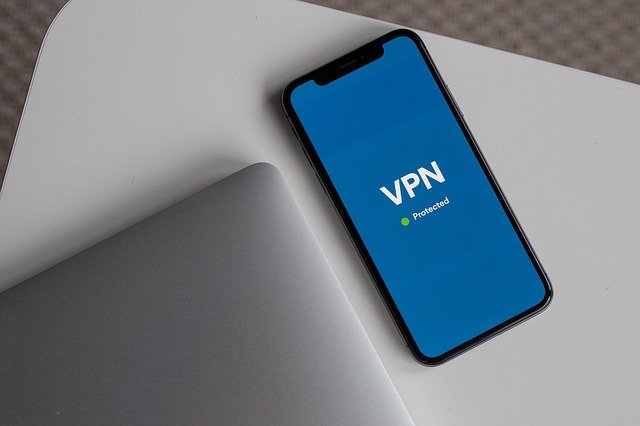
So you’ve heard about setting up a VPN with VPS hosting, but maybe you’re not quite sure where to start. Don’t worry, I’ve been there too! Let me walk you through the process in a way that’s clear and easy to follow. By the end of this guide, you’ll be equipped with the knowledge to secure your internet connection and access your VPS securely from anywhere. Let’s dive in!
Understanding Cloud VPS Hosting
Before we get into setting up your VPN, let’s clarify what VPS hosting actually means. VPS stands for Virtual Private Server, which essentially means you get a dedicated portion of a physical server that acts as your own virtual server environment. It’s like having your own mini-computer in the cloud, running any operating system.
Imagine you have a virtual room in a vast building (the server). This room is yours to customize and use as you wish, without interference from others renting their own rooms in the building. That’s the essence of VPS server cloud hosting — it gives you autonomy and control over your digital space.
Getting Started with Cloud VPS Hosting
To begin your journey into setting up a VPN with cloud vps hosting, you first need to choose a reliable VPS provider. This is crucial because the quality of your hosting service will impact the performance and security of your VPN. Look for providers that offer robust security features, reliable uptime, and good customer support.
Anecdote about “functor”:
Choosing the right VPS provider can be like finding the perfect book in a library. Each book (provider) has its own style and appeal. It’s not just about the content (features), but also about how well it resonates with you. Just like finding that special book (or functor) that opens up new worlds of understanding, the right Cloud VPS provider can unlock opportunities for your online ventures.
Once you’ve selected your cloud VPS provider, it’s time to spin up your VPS server cloud instance. This process usually involves selecting your preferred operating system (in this case, Windows), configuring storage and networking settings, and deploying your virtual server. Most providers offer intuitive interfaces or control panels to guide you through these steps.
Setting Up Your VPN on Cloud VPS Hosting
Now comes the exciting part — setting up your VPN on your VPS. A VPN, or Virtual Private Network, encrypts your internet connection and routes it through a remote server, protecting your online activities from prying eyes.
To begin, you’ll need to install VPN server software on your VPS. There are several options available, but OpenVPN is a popular choice for its open-source nature and strong security features. You can install OpenVPN using the command line or through a graphical interface, depending on your comfort level with server administration.
Anecdote about “px”:
Installing software on your Cloud VPS is akin to decorating your digital workspace. Each tool (like OpenVPN) adds a new layer of functionality and security, much like placing a carefully chosen picture (or px) on your office wall. It’s these personal touches that make your workspace (or VPS) uniquely yours.
After installing OpenVPN, you’ll need to configure it to suit your needs. This involves generating encryption keys, setting up user authentication, and defining which traffic should be routed through the VPN. Don’t worry if it sounds complex — there are plenty of guides and tutorials available online to help you through each step.
Securing Your Connection and Access
Once your VPN is configured, it’s time to secure your connection and manage access to your VPS. You’ll typically create user accounts with secure passwords and configure firewall rules to restrict access to essential services. It’s important to regularly update your VPS and VPN software to patch security vulnerabilities and ensure optimal performance.
Anecdote about “flaherty”:
Securing your Cloud VPS box is like fortifying a castle. Each layer of defense (like strong passwords and firewalls) protects your kingdom (or VPS) from potential threats. As General Flaherty once said, “A well-defended castle can withstand any siege.” Similarly, a well-secured VPS can handle whatever the digital world throws at it.
Managing Your VPN and VPS
Congratulations! You’ve successfully set up a VPN with Windows VPS hosting. Now, it’s time to manage and maintain your setup. Regularly monitor your VPS for performance issues and unusual activity. Consider setting up logging and monitoring tools to keep track of who accesses your VPN and when.
For added convenience, you can configure your devices to connect to your VPN automatically whenever you access the internet. This ensures that your online activities remain private, whether you’re browsing from home, a coffee shop, or halfway around the world.
Final Thoughts on VPS Hosting and VPNs
Setting up a VPN with Windows VPS hosting opens up a world of possibilities for securing your online presence and accessing your virtual server securely from anywhere. Remember, the key to a successful setup lies in choosing a reliable VPS provider, configuring your VPN correctly, and staying vigilant about security.
By following this guide and taking proactive steps to secure your VPS and VPN, you’ll have peace of mind knowing that your digital activities are protected. So, what are you waiting for? Dive into the world of VPS hosting and unlock the full potential of your online endeavors today!
In Conclusion
Setting up a VPN with VPS hosting is a powerful way to enhance your online security and accessibility. With the right tools and knowledge, you can create a robust digital infrastructure that meets your needs and safeguards your data.



